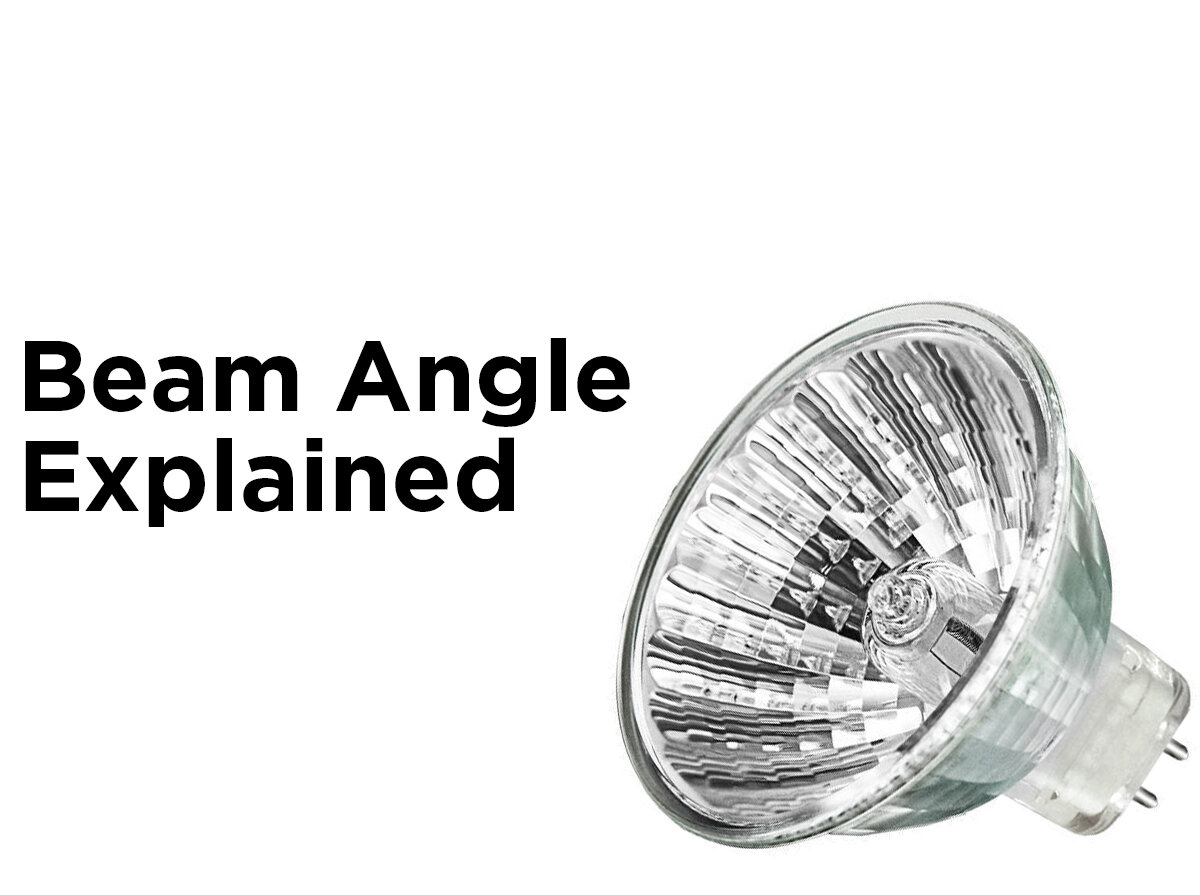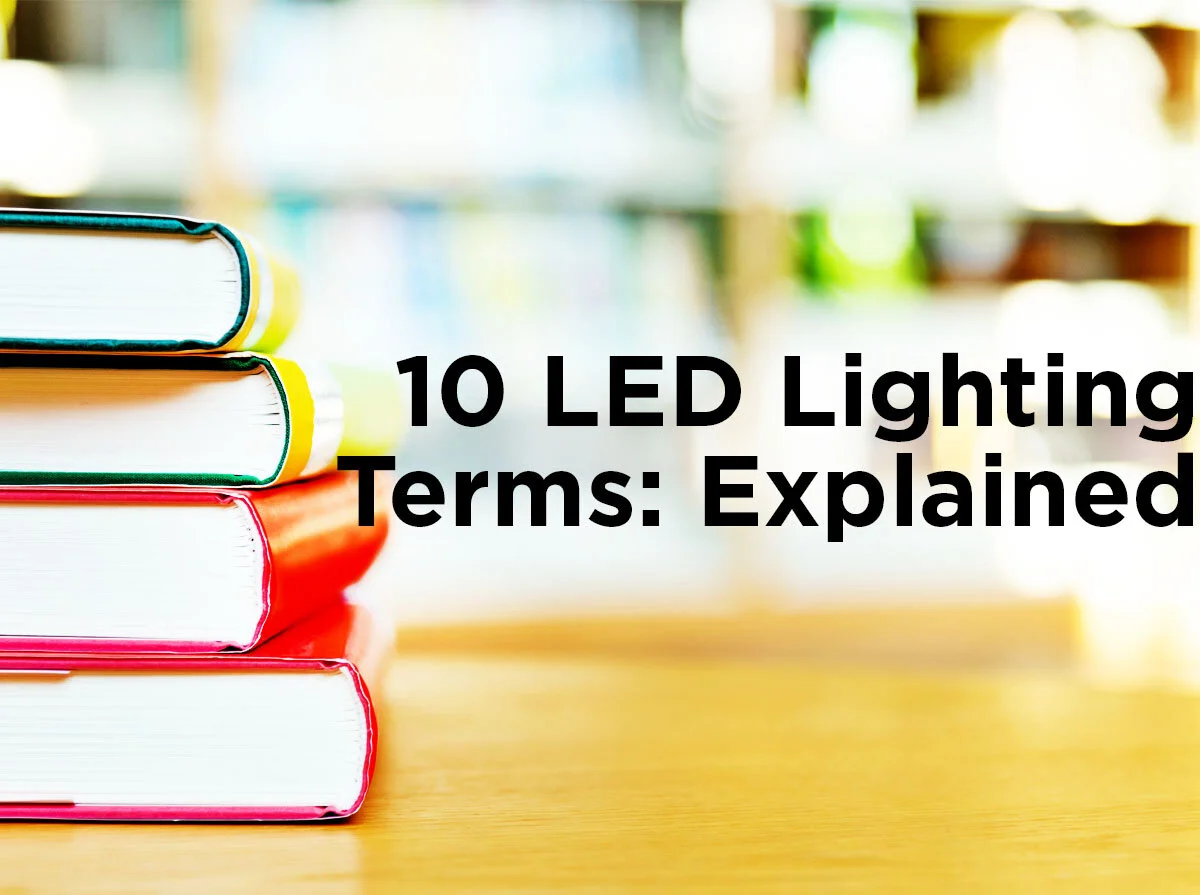Beam Angle: Seeing Spots and Floods
While there isn’t an official university degree for lighting, understanding differences in beam angles for lights will help to focus your understanding of effective lighting techniques. Regardless of whether you’re lighting a home, garage, or showroom floor, you need to control how much light you have and where it goes. Beam angle is often a deciding factor for exactly which bulb or fixture you need for an application, though you only need a general idea of how much area is covered by a lamp, issues with light pollution, energy efficiency, or even bothering your neighbors with light spillage (when excess light shines through windows or into unintended locations) can all be resolved by using the correct light for the right job.
Differences in Beam Angle
As we’ve covered previously, beam types are broken down into easily identifiable terms. While the terms can differ based on lamp type (PAR versus MR) or manufacturer (some manufacturers will list a wide angle flood at 50°, while others will still list a 50 degree lamp as a flood light), the terms will give you a general understanding of what is covered by the lamp.
You’ll find that each lamp type lends itself to specific uses. Lamps in the spot category are excellent for task lighting, specifically when it comes to work benches, single point of focus tasks, or feature lighting (similar to what you find in accent lights or general landscape lighting). Spot lighting is usually person to task specific lighting. Flood lights are better suited to general lighting. The wide angles of flood lights make them effective street lamps and security lights, but they also function well for recessed downlights in homes. The broader dispersion range gives them an effective method of covering a large area. Flood lights are the majority cause of light spillage and pollution. Flood lamps which hit highly reflective ground sources, or which are angled more than 45° away from directly downward reflect light into the night sky, illuminating clouds which creates a massive backlight for the city. Reducing the beam angle, intensity, or adjusting physical angle of your outdoor lights will mitigate this effect.
Reflectors, Bulbs & Source Lumens
For any reflector lamp or fixture based-based light source, beam angle is a factor. The fixture itself will limit how much light can be output, and the lamp has a set rating for just how much light (and what direction) can be given. Candlepower was the relative measurement of brightness for older incandescent lamps, but just as wattage is being replaced so too is candlepower. Lumens are now the unit of measurement for brightness when it comes to a lamp. It’s important to remember these limitations, such as the maximum angle for a reflector, illumination distance, and total source lumens.
Many fixtures contain reflectors to adjust the beam angle of the lamps they hold. For example, many HID fixtures take a lamp with a 360° angle and redirect the light to a more suitable beam angle. The maximum beam angle is going to be whatever your actual lamp puts out, but if your fixture has a lower angle that will be what is actually put into play. This way you can use higher power lamps without adding to current light pollution problems. Using a Dark-Night Sky certified fixture, the angle and direction of your light will be more easily controlled, preventing light pollution and light spillage.
Knowing what angle your lamps are is also beneficial for improving dim lighting. As light moves from a source, it disperses, no matter how tightly focused the beam is (this is true even of lasers). This dispersion is covered by a law known as the inverse square law, where the brightness of a light is inversely proportional to the distance from the source. In simpler terms, the further from the source, the dimmer the light will be. This is useful to know because, if you have much higher ceilings, using a narrower beam angle for your recessed lights will give them more distance to spread before becoming too dim to illuminate objects. If you can’t run higher wattage lamps, simply choose a narrower beam angle.
There’s one additional issue with reflectors, though it is very small. Reflected light comes with a loss. A 360° lamp that’s housed in a fixture will not be able to maximize the full amount of source lumens since easily half of the lamp is facing the inside of the fixture. Even reflective surfaces will suffer some level of loss. This is why some LED fixtures will seem brighter than a housed lamp of equal lumens. LEDs emit all of their light within the angle claimed by the fixture while traditional fixtures using a non-reflector bulb will not be able to do the same. The rated lumens for the traditional bulb will have to be reflected back, causing some loss, while the LED fixture emits all light in the same direction. Depending on your situation, this can be a great thing or a very bad thing.
As you can see, there’s a wide range of beam angle selections, and all of them are important. Choosing the right angle is important for proper light coverage and brilliance. Just be sure to make your selection based on area and relative distance. Have any other questions concerning angled fixtures? Ask away in the comments below. You can also follow us on Facebook, Twitter, LinkedIn, Pinterest, or Instagram to stay up to date on current lighting news and new tips for lighting!







